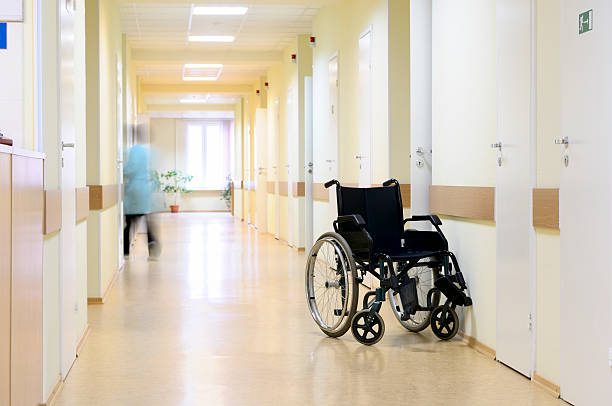
Skilled nursing facilities (SNF) have also been referred to as nursing homes. SNFs are for individuals that require a higher level of medical care than what can be provided for in an assisted living facility. They are available to provide 24 hour medical care. A recent research article from the BMC Geriatrics Journal states that SNFs have been associated with decreasing hospital stays, lowering hospital costs, improving patients’ health and quality of life, and lowering the rates of unplanned readmissions. But now that is being challenged by the COVID-19 pandemic.
The COVID-19 pandemic has put immense pressure on SNFs. Residents are being severely impacted and are highly susceptible to the COVID-19 virus. There was awareness of the emerging issues in SNFs across the United States before the COVID-19 pandemic. Economic burdens, quality of care, availability of beds, and familial impact were among the issues. However, the COVID-19 pandemic has exposed even more cracks within the system of SNFs.
The following are some of these cracks:
- rising number of deaths,
- more complications with care and mitigation plans,
- high risk/exposure environment,
- residents/staff are facing social isolation; and
- residents are less likely to survive from the virus compared to other age group populations.
Time will tell how SNFs will outlast this battle with the COVID-19 virus while awaiting a vaccine to be properly developed, approved and administered.
Another emerging issue is the capacity and quantity of nursing homes. There will be more individuals in need of a bed, whether it be short or long term, in SNFs. Data by the CDC reports that in the United States, there were more than 15,600 nursing homes with 1.7 million licensed beds providing care to 1.4 million residents in 2016. Currently, there are areas in the country that have a low number of SNFs providing care for their current growing aging population. Overall, with an aging population, the current number of licensed beds is worrisome. Also, some things to consider about the bed availability is knowing which SNFs can accommodate for long-term beds, short-term beds, or both and how many SNFs have specialized units for special services and care?
The cost of SNFs have been growing and becoming an economic burden. Now, with the COVID-19 pandemic it has highlighted the cracks in the healthcare system and the networks of SNFs are underfunded throughout the country. The Centers for Medicare & Medicaid Services reported that “the overall economic impact of this proposed rule is an estimated increase of $784 million in aggregate payments to SNFs during 2021.” The government is funding some of the care for Medicare beneficiaries, which these beneficiaries rely on for supplemental funding. Medicare does not pay for “custodial” or long term care, so funding for these residents are through private pay or Medicaid. Shorter-stay residents, like rehabilitation care, are paid through Medicare or their insurance company.
There are conditions that need to be met for Medicare in order to pay for the residents’ stay:
- The resident must have Medicare Part A and have days left in their benefit period to use.
- Have a qualifying hospital stay and their doctor ordered for their ” medically necessary” daily skilled care, which must be given or supervised by skilled nursing and therapy staff.
- The SNF they will be discharged to is certified by Medicare.
- The skilled services are needed for a medical condition that was either hospital related or started in a SNF during the stay.
Medicaid does cover extended stays for individuals with limited assets or low-income who require a higher level of medical care. However, the conditions that need to be met are set and vary by state. The fee for service spending on Medicaid-funded nursing home services, which combine state and federal funds, totaled $41.0 billion in 2018. The dilemma is that either you have savings, a retirement account to afford custodial care provided in a 5-star nursing home, or you depend on the government for your care. Nowadays, individuals are remaining at their homes, utilizing assisted living facilities to age in place if possible, or receiving short-term nursing care has risen drastically.
With the COVID-19 pandemic, the United States healthcare system is in shock and skilled nursing facilities are going to be facing a financial crisis as the rest of the country. Currently, each state has their own county and local department of public health working with SNFs to mitigate the COVID-19 virus, but it comes at a price for mass testing, paying more for bed coverage, and personal protective equipment. The American Hospital Association has written a letter to the Centers for Medicare & Medicaid Services for extra funding. Luckily, during the COVID-19 pandemic, Medicare is allowing for some individuals affected to renew their SNF coverage or get care without a qualifying hospital stay. The COVID-19 pandemic is challenging and impacting SNF’s, the government, and families.
Hopefully, in the future we can have better mitigation plans for the COVID-19 virus, approve more funding for SNFs and home based medical services, bring awareness and additional culturally congruent care programs in SNFs to help ethnic and racial minorities who are being disproportionately affected by the COVID-19 virus, and have better methods or practices to see loved ones in SNFs and thus preventing social isolation.
WellPath Partners is your senior resource referral guide. Follow us on ALL social media platforms and join us weekly for more content and public health discussions.
By: Hilda Huambachano
Placement Coordinator at WellPath Partners
B.S. in Health Science & Biology at San Diego State University
MPH Candidate at California State University, Long Beach
